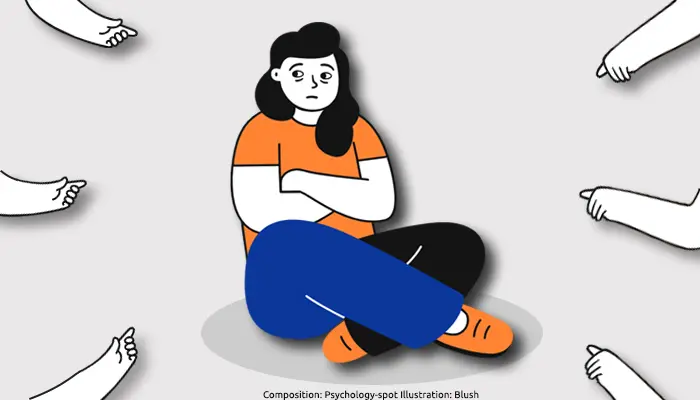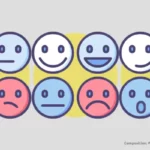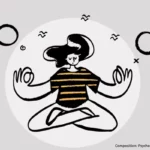
Guilt is one of the most distressing and paralyzing feelings we can experience. Once it is born, it clings to consciousness like a patina that is difficult for us to detach. Like a thousand-headed hydra, it usually comes back even when we consider it missing.
The worst of all is that we can get to feel guilty for practically anything, for what we have done or not, for what we think or feel, for the words said or those that we have kept silent …
In reality, it is not strange that guilt consumes us since we are children of a “blameworthy culture” that has dragged the original sin for centuries. Ergo, we all believe that we should atone for a guilt, even if we are not very clear about its reason for being.
In fact, ethnological studies have found that Samoans are more likely to indulge in temptations than Americans, but they are also less likely to feel remorse or guilt after transgression.
The funny thing is that Western culture plants the seed of guilt at a very young age. Another research has found that American children as young as 2 and 3 have already developed a greater tendency to feel guilty after committing an offense than Taiwanese children.
Feeling guilty is not the same as being guilty
Guilt takes many forms, almost as many as people and situations. However, in a general sense we can experience five main types of guilt:
1. “Healthy” guilt
It is about a “manual guilt”, that we experience when we do something wrong. It may be due to harm we have caused to another person – whether intentionally or unintentionally – or even a violation of our own code of ethics. We may feel guilty, for example, for lying or insulting. We also tend to feel guilty when we revert to old harmful habits that we thought were definitely buried in the past, such as smoking or drinking.
This kind of guilt is not negative in itself – or at least not so negative. If we have done something wrong, guilt warns us. It activates the feeling of responsibility for the damage caused and generates a feeling of remorse or regret, a psychological state that pushes us to try to repair what we have done wrong. In these cases, the most important thing is not to blame ourselves too much and to assume a proactive attitude aimed at compensating for our mistake. We can apologize to the person and/or think about what we should do to avoid behaving like this again. Case closed.
2. Guilt for negligence
It’s that kind of guilt we experience when we don’t do something we should have done or wanted to do. It is the guilt we feel when, for example, we know that duty calls us, but we decide to do something else that is more pleasant or satisfactory. It is generated when we procrastinate or delay important decisions and things end up going wrong. In fact, this type of guilt is usually generated from inaction, when we do not exercise self-control and succumb to our first impulses.
This type of guilt is difficult to manage because, strictly speaking, we did not do anything wrong, the problem is that we punish ourselves for what we stopped doing. We punish ourselves for laziness or indifference. Or perhaps because we were not able to anticipate the consequences of our negligence. To free ourselves from this type of guilt, we must recognize these unpleasant thoughts and accept them, even if they make us feel bad at first. In the long run, radical acceptance will prove liberating.
3. Imaginary guilt
Guilt tends to drag us onto slippery ground, which often arises from irrational beliefs. Therefore, if we are convinced that we did something wrong, we will feel as guilty as if we had done it. Some people, for example, may blame themselves for distancing themselves from another person, assuming they have done something wrong when they really haven’t. People also often blame themselves for accidents suffered by their loved ones, although in reality they could not anticipate events and do something to prevent them.
In these cases, before we begin to accuse ourselves of having committed a crime and sit in the dock, we must put our ideas through the “reality test.” Above all, we need to make sure that the event really happened and does not exist only in our imagination or is the product of a distortion of our memories. If the fact for which we are blaming ourselves really occurred, the second step is to elucidate our degree of responsibility. We are probably exaggerating our power to change the flow of events.
4. Guilt for limitation
Sometimes we think we are Superman. We tend to believe that we can do more for the others. Help and support them more. Give them more. We also tend to believe that we can handle everything. That is why we assume more responsibilities, obligations and homework. At a certain point we realize that we have limitations. Then we can feel guilty. We feel guilty for not being enough, not helping enough, not dedicating more time and resources …
This type of guilt is usually linked to hyper-empathy syndrome and burnout syndrome. In practice, it arises from a distorted perception and the belief that nothing we do is enough. That leads us to constantly sacrifice and push ourselves beyond our limits until we end up emotionally exhausted. To deal with this type of guilt we must assume our limitations as people and understand that all dedication and sacrifice has its limits. To take care of the others or do our job well, we must first take care of ourselves.
5. Survivor’s guilt
This type of guilt is particularly tough and difficult to remove. It is experienced by people who have survived family and friends in an accident or disaster. However, it can also be experienced by those who are in better health than their friends or family or those who lead better or more comfortable lives. The survivor guilt can also torture people who believe they have had undeserved opportunities in life compared to those who have not been able to enjoy them.
In many cases, this type of guilt leads people to self-destructive behaviors, so it is important to remember that no “punishment” we impose on ourselves can undo the past. Instead, we must find strength and inspiration in those significant people who may not have had our same opportunities, but would probably want us to take advantage of them. Or think of those people who are no longer by our side, but would surely want us to be happy and take advantage of life.
The fine line that separates healthy guilt from neurotic guilt
Guilt is not a pleasant feeling. There is no doubt. However, it is not always negative. Guilt also has an adaptive component that is very useful for social relationships.
New York University psychologists manipulated the results of a racial bias test to make some people feel guilty about their responses and found that those participants were more likely to take positive steps to reduce their biases.
This indicates that guilt works in two ways: initially it can make us feel bad and discourage us from repeating the behavior that made us feel guilty, but it can also encourage a positive behavior, focused on reducing that feeling of guilt. Guilt can help us grow as people.
That kind of guilt is adaptive. Healthy guilt is what we experience when we hurt someone or regret a mistake. It has an identifiable cause and generates genuine regret. Therefore, it encourages us to remedy the damage and prevent it from happening again. We feel responsible and want to rebuild the relationship. In those cases, guilt also acts as a social glue that guarantees coexistence.
However, sometimes we cannot repair the damage or go back to avoid the mistake. When we can’t make up for anything but still feel responsible, guilt is exacerbated. In those cases we can refer to a neurotic guilt that can end up being pathological.
Neurotic guilt also occurs when the feelings associated with it are not linked to a specific cause. We feel guilt as a heavy burden, although objectively we have no responsibility for what happened. Then life becomes a nightmare because we stop to feel the guilt and we start feeling guilty. Guilt permeates completely our image of ourselves and we begin to feel unworthy and inadequate.
Of course, it is difficult to live completely guilt-free, but we can keep this feeling within healthy limits that we can manage. Guilt can help us understand ourselves better and change some of our wrong attitudes or beliefs. However, if we allow it to grow, it can end up consuming it all.
Sources:
Amodio, D. M. et. Al. (2007) A dynamic model of guilt: implications for motivation and self-regulation in the context of prejudice. Psychol Sci; 18(6):524-30.
Chiang, T. & Barret, K. C. (1989). A cross-cultural comparison of toddlers’ reactions to the infraction of a standard: A guilt culture vs. a shame culture. Meeting of the Society for Research in Child Development, Kansas City, MO.
Grinder, R. E. & McMichael, R. E. (1963) Cultural influence on conscience development: Resistance to temptation and guilt among samoans and american caucasians. Journal of Abnormal and Social Psychology; 66(5): 503-507.



